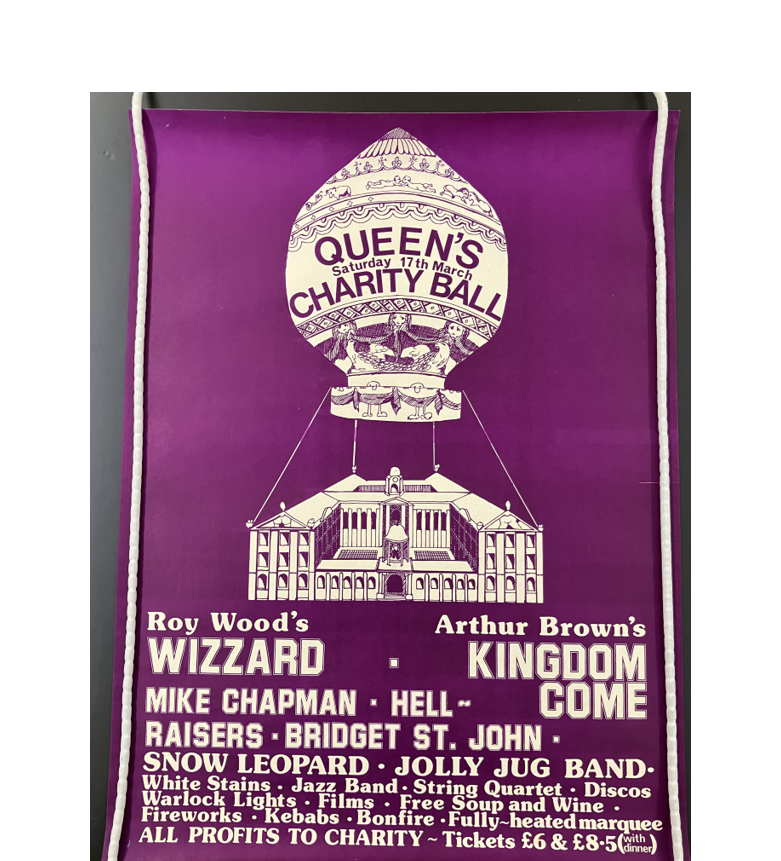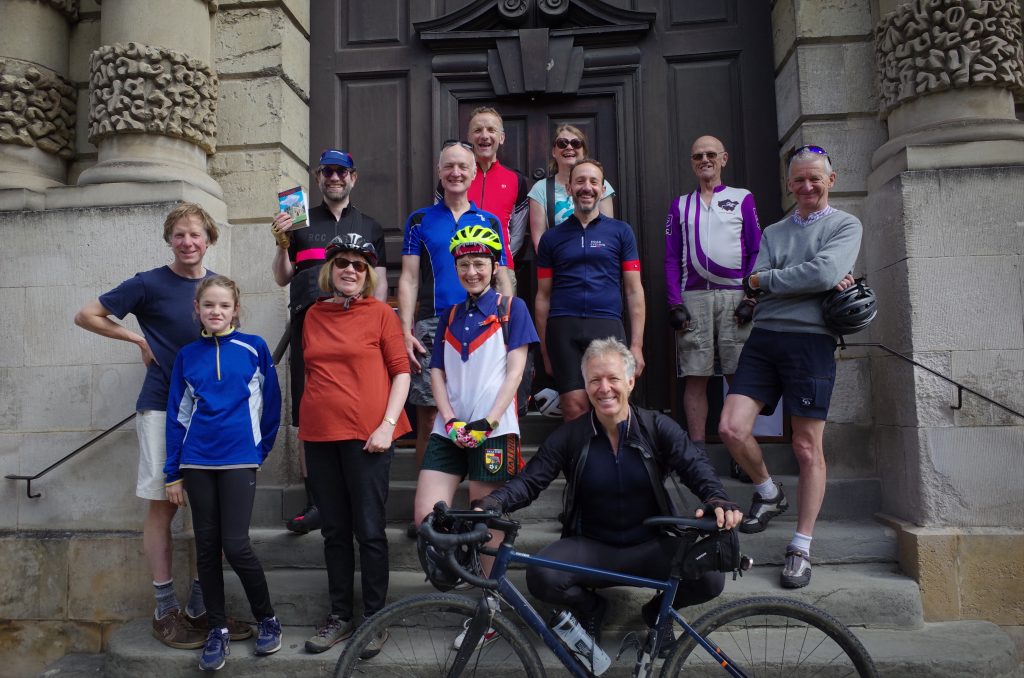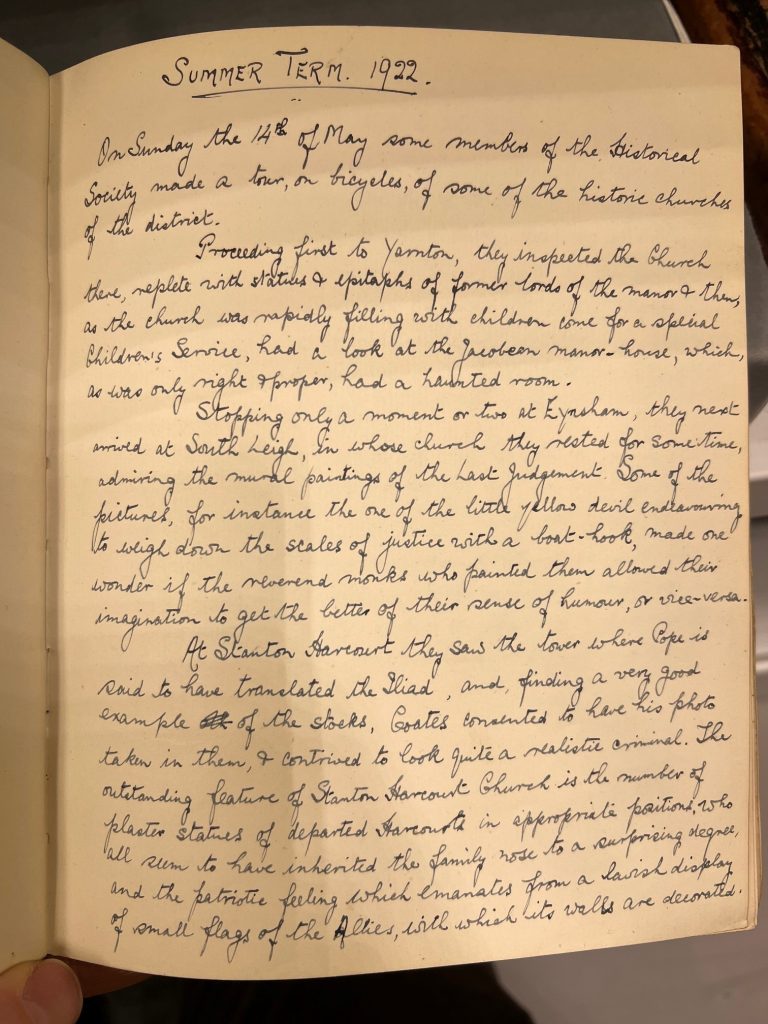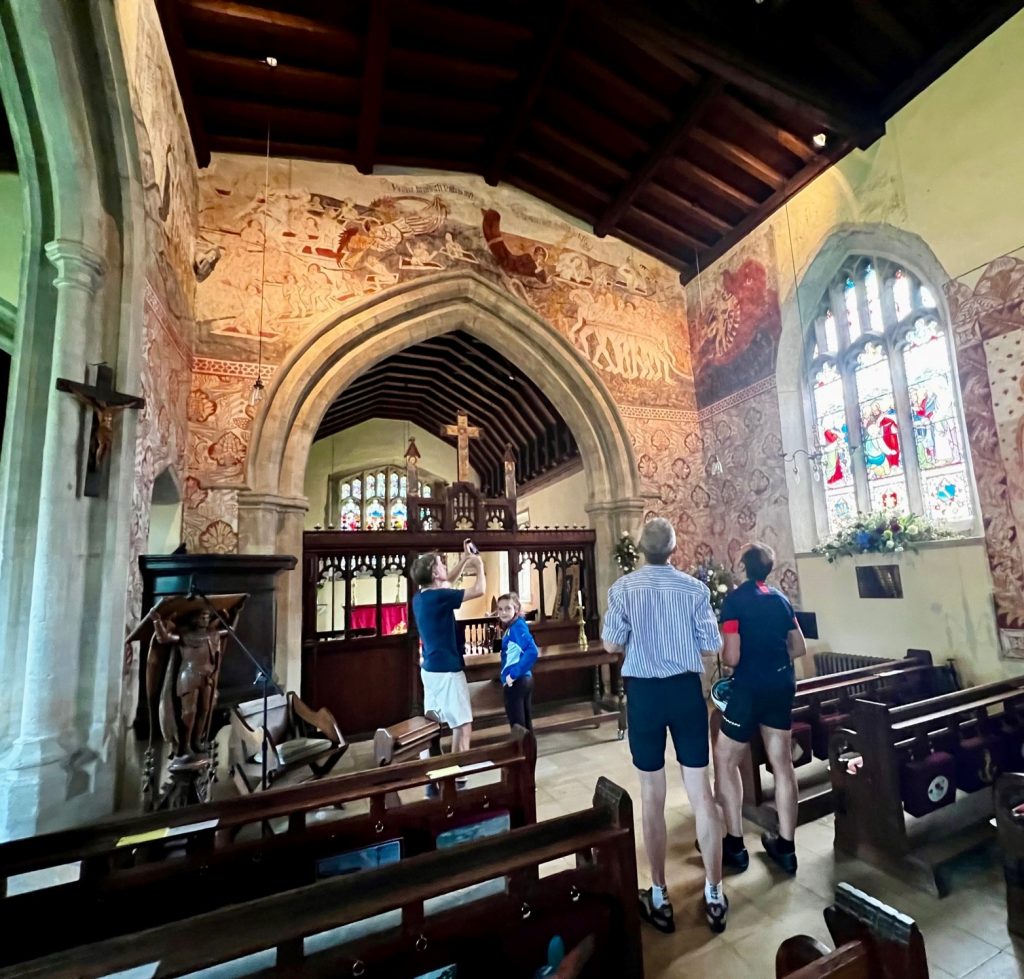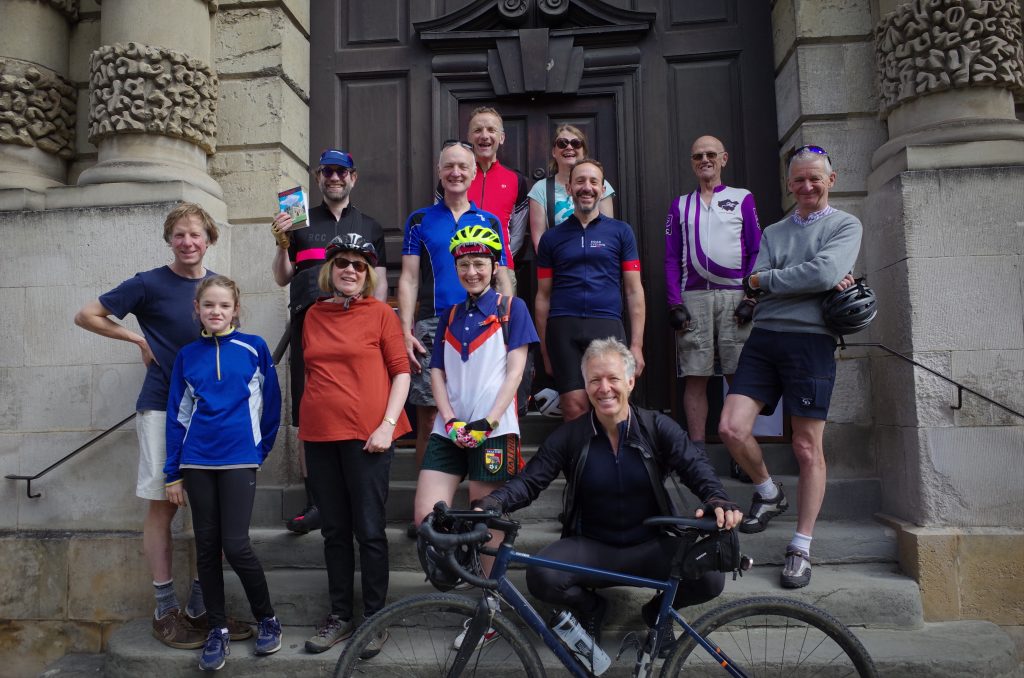Queens’ 1973 Easter Ball: the Ball that never was
Old Member Paul Rex (Modern Languages, 1971) writes
This article was prompted by my contemporary François Gordon, who contributed three Queen’s Ball posters from 1971, 1972 and 1973 to the College archives and who suggested that I write this article, subsequently reminding me a number of times that I still had to do so.
I was in the second year of my Modern Languages degree when the idea of a 1973 College Ball started to circulate and jumped at the chance to join the Ball Committee, which was (if my memory is correct) chaired by John Thirtle.
This was a heady time to be involved in a College Ball, as can be seen from the two previous years’ line-ups, which featured Kevin Ayers (sadly deceased in 2013) and Van der Graaf Generator (still going strong) in 1971 and Argent and Status Quo (the latter still rockin’ all over the world) in 1972. It was well known that Magdalen College had managed to sign up the Rolling Stones for their 1964 Commem Ball; the group’s fame increased rapidly between their signing and the date of their appearance and the Ball Committee had reportedly had to involve one of Magdalen’s Law Professors to ensure that the Stones actually turned up.
The Ball Committee’s early discussions reflected our personal musical preferences rather than a hard-headed commercial approach (I remember that Genesis was floated as one possibility), but reality started to set in once we started working on financial calculations involving ticket sales and band fees.
Some background on inflation is necessary to put the numbers in context. Queen’s 1971 Spring Ball, organised jointly with St Hugh’s, had charged 6 Guineas (£6.30) for a double ticket which included dinner and breakfast. The 1972 Summer Ball charged a steeper 10 Guineas (£10.50). Our approach was to try to differentiate the 1973 Ball from competitors, not only by running it again as an Easter/Spring Ball, but also by charging a more egalitarian rate of £8.50 with dinner and offering an option of £6.00 without. After adjusting for inflation, this was around three-quarters of the previous year’s ticket cost.
These figures seem extraordinary today, especially the £2.50 which covered dinner for two people. However, £1 in 1973 was equivalent in purchasing power to £15.50today, so the ticket cost was around £130 in 2025 pounds. The amount allocated for dinner – £37 in 2025 pounds – still seems low by today’s standards, but the catering was being done by the College kitchens and expectations were probably a lot lower 55 years ago.
Having set our ticket fees, we could look at what groups the budget would cover. Our eventual lead choice was Roy Wood’s Wizzard, which had had its origins in The Move, a Birmingham band whose song “Flowers in the Rain” was the first record be played on Radio 1 when the station was launched, and the Electric Light Orchestra (another band still going strong).

The second lead was Arthur Brown’s Kingdom Come, which had started as The Crazy World of Arthur Brown in the 1960s. Brown was famous for wearing a flaming headdress during live performances of his major hit “Fire” – according to Wikipedia “The helmet was improvised with a leather skull cap onto which was bolted a metal dish that held lighter fluid or petrol. As the cap was not insulated, the heat from the burning fuel quickly conducted through the fixing bolt to the top of Brown’s head, causing him considerable pain.”

Both bands would have produced a pretty lively evening in the setting of Queen’s, but sadly the Ball was not to be. Despite a very intensive publicity campaign, which in 1973 meant pinning up posters on notice boards and putting flyers in the individual pigeonholes at each college, we were unable to sell enough tickets to cover the costs of the event, so reluctantly decided to pull the plug at some point in Hilary Term.
With the benefit of hindsight, a Ball in a marquee in March was perhaps a less compelling proposition than one around Midsummer Day and the event was still quite expensive despite our pricing approach. From a personal perspective, the experience taught me a lot about event planning, publicity…and the perils of wishful thinking in business planning.
As a footnote, I have just been checking this year’s Queen’s College Commemoration Ball (2025), which has tickets at £159 for students and £199 for alumni – and am delighted to see that it is completely sold out!
With thanks to Dr Amy Ebrey, Assistant Archivist
